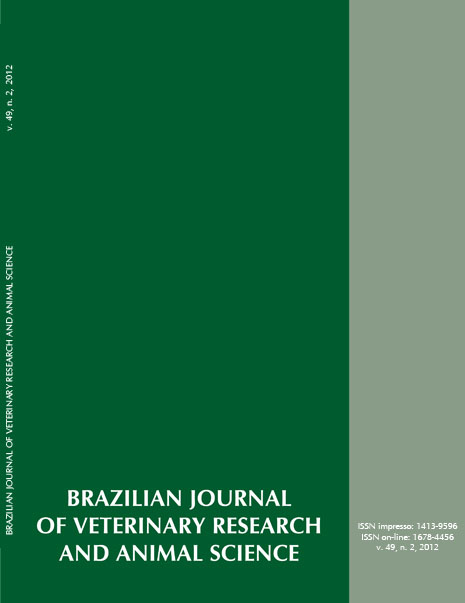Study of gastrointestinal fungal flora of bats (Mammalia, Chiroptera) of the northwest region of São Paulo state: zoonotic potential
DOI:
https://doi.org/10.11606/issn.2318-3659.v49i2p146-152Keywords:
Bats, Yeasts, Molds, Anthropozoonoses, São Paulo StateAbstract
Bats are hosts of a rich diversity of microorganisms. Many studies indicate a close link between bats and fungi with pathogenic potential, especially for living in environments such as caves, caverns and hollow trees, favorable to the maintenance and spread of fungi. The objective was to study the gastrointestinal mycoflora of bats. Of the 98 samples belonging to 11 species of bats coming from 15 studied cities, 20% of the species were Carollia perspicillata, 19% Artibeus lituratus, 17% Molossus rufus, 13% Glossophaga soricina, 9% Nyctinomops macrotis, 8% Molossus molossus, 7% Desmodus rotundus, 2% Lasiurus ega and 1% Eptesicus furinalis, Myotis nigricans and Tadarida brasiliensis. The genus Aspergillus sp. was isolated from 29% of the samples, followed by 6% Microsporum sp. and Penicillium sp. 4% Trichophyton sp. and zygomycetes and 2% Fusarium sp. Of yeast species, 14% were from Rhodotorula sp., 10% Candida sp. and 2% Cryptococcus sp., 22% of isolates remained unidentified. All 82 cultures of organs were negative for Histoplasma capsulatum. There was a statistically significant association between the results of microbiological culture and bat species (p < 0.05). We conclude that the bats can act as disperser agents of fungi with pathogenic potential, although other studies should be performed to establish strategies to identify the main factors correlated with the growth and spread of microorganisms in nature and implication of bats in the epidemiological cycle.
Downloads
Downloads
Published
Issue
Section
License
The journal content is authorized under the Creative Commons BY-NC-SA license (summary of the license: https://





